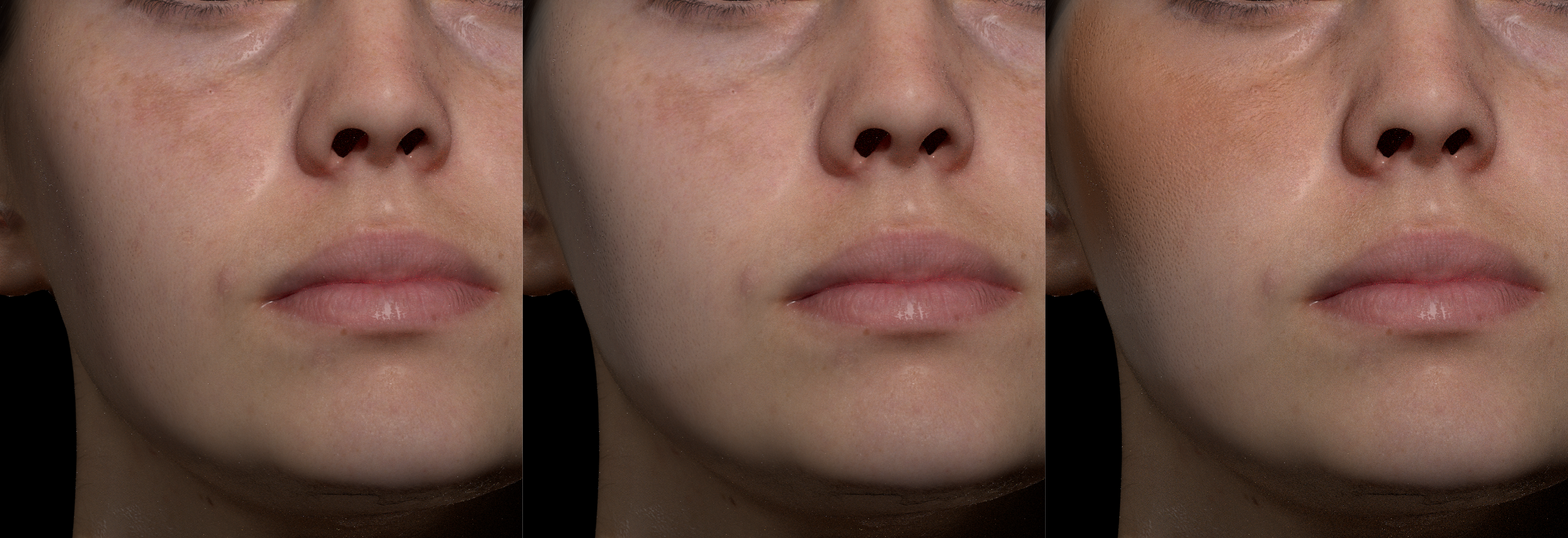Foundation Cosmetics Rendering (EGSR 2024)
We started this project two years ago lead by Dario Lanza when we visit Jeppe Frisvad as part of our first secondment. The project was a collaboration between three research groups: Graphics and Imaging Lab, DTU Visual Computing Section and Media Design and Image Reproduction. Our work is going to be presented by Dario Lanza at the Eurographics Symposium on Rendering (EGSR 2024, South Kensington, London) under the title “Practical Appearance Model for Foundation Cosmetics”. We represent each individual layer as a stochastic participating medium with two types of scatterers inspired by the microscopic constituents inside foundation cosmetics that mimic the most prominent visual features of these cosmetics: diffuse scatterers responsible for the matte appearance and specular platetets responsible for the glossy looks. The implementation consists of a multi-layered material implemented inside the physically-based renderer PBRT version 4 using the Position-Free Monte Carlo formulation. The specular platelets are modelled using the SGGX microflake phase function, while the diffuse particles are modelled with a two-lobe Henyey-Greenstein phase functions. If you would like to know more about this project, then please visit the official project website Practical Appearance Model for Foundation Cosmetics. Below you can find a practical example where we add two cosmetics layers on top of a white female character’s skin (left, bottom layer): a matte finish (center, middle layer) and a red shinier layer (right, top layer).

Team Members: Dario Lanza, Juan Raul Padron Griffe, Alina Pranovich
Github repository (Coming soon)
Carlos Aliaga and his colleagues recently release the source code of BioSkin. An interesting technique that can predict the biophysical skin properties from RGB reflectance and we think could potentially be combined with our appearance model in order to render the cosmetic foundations on different skin types.